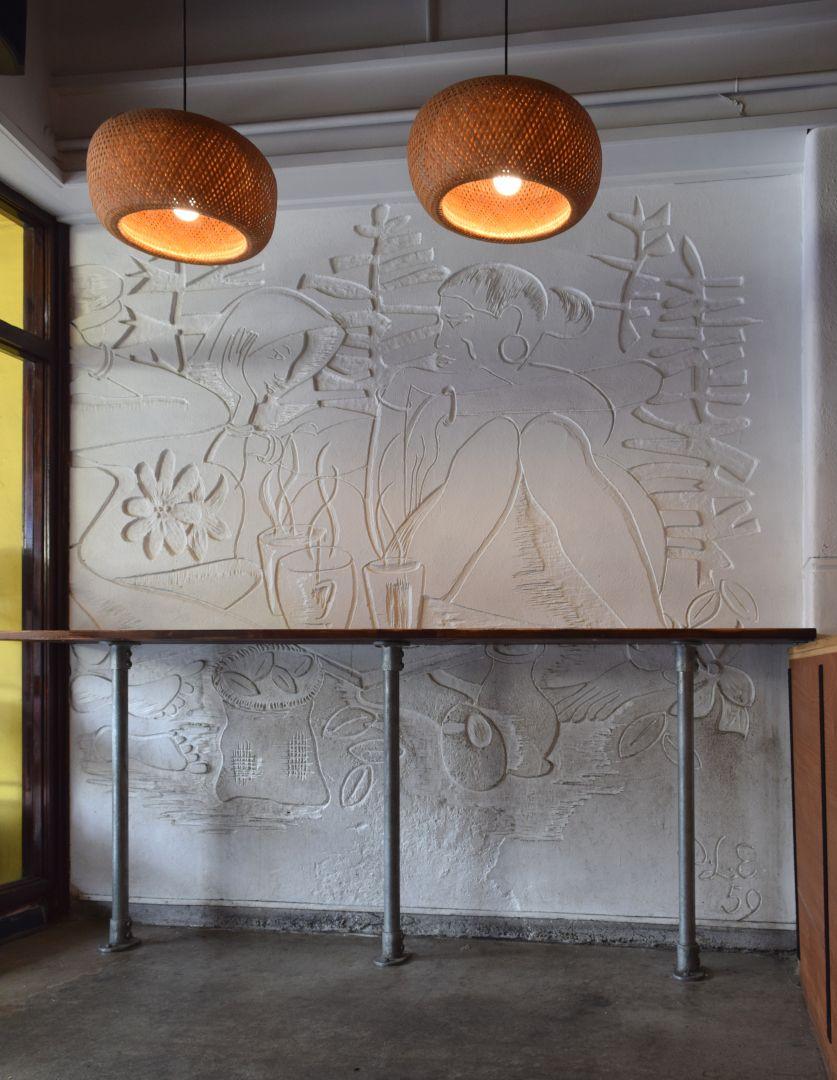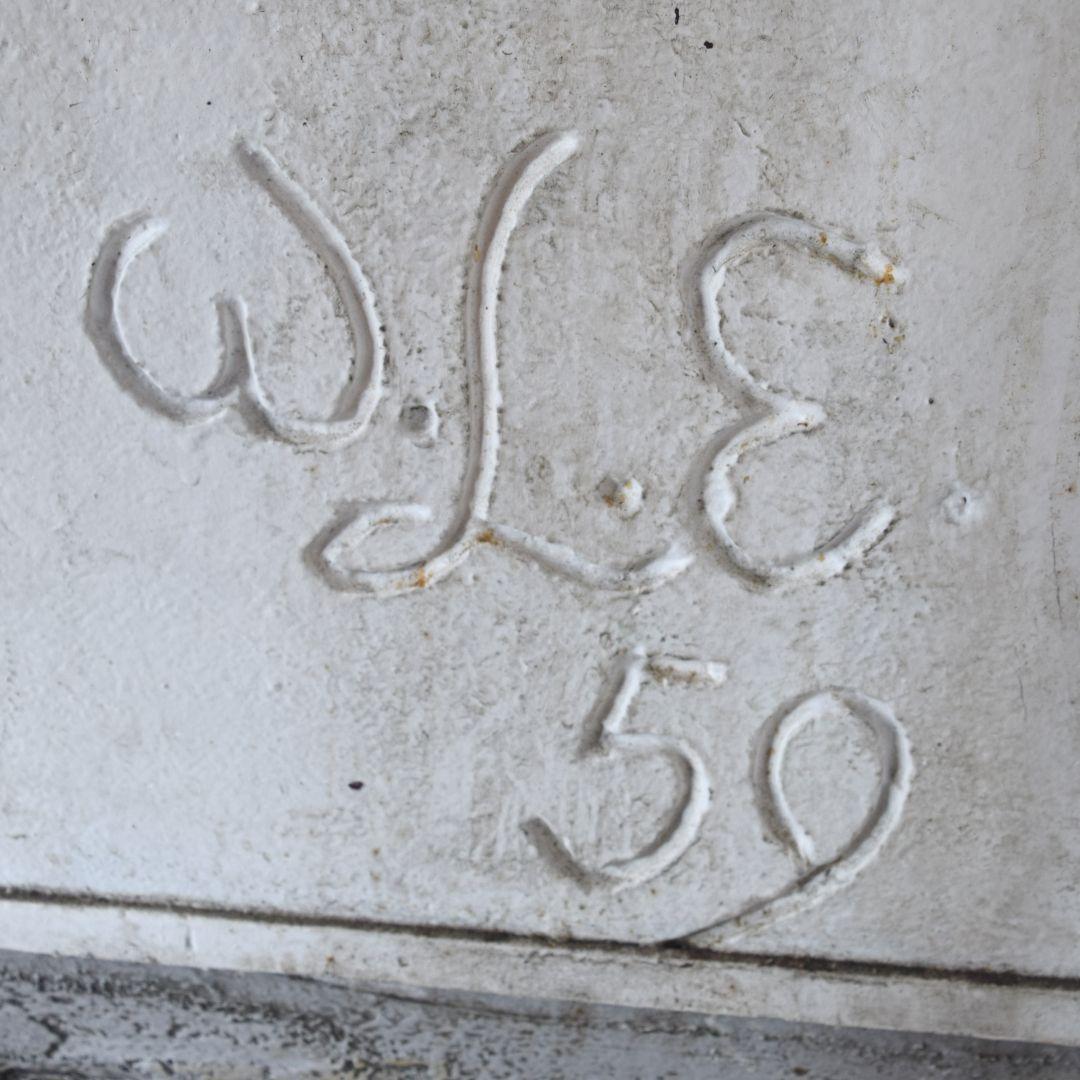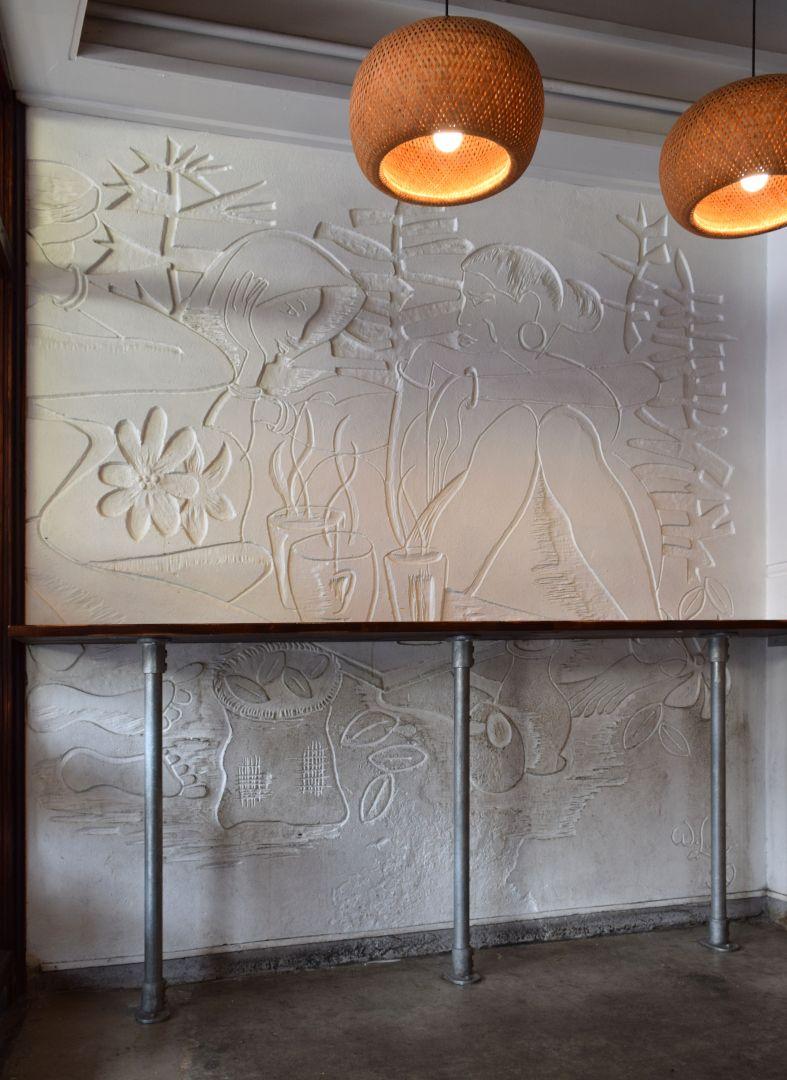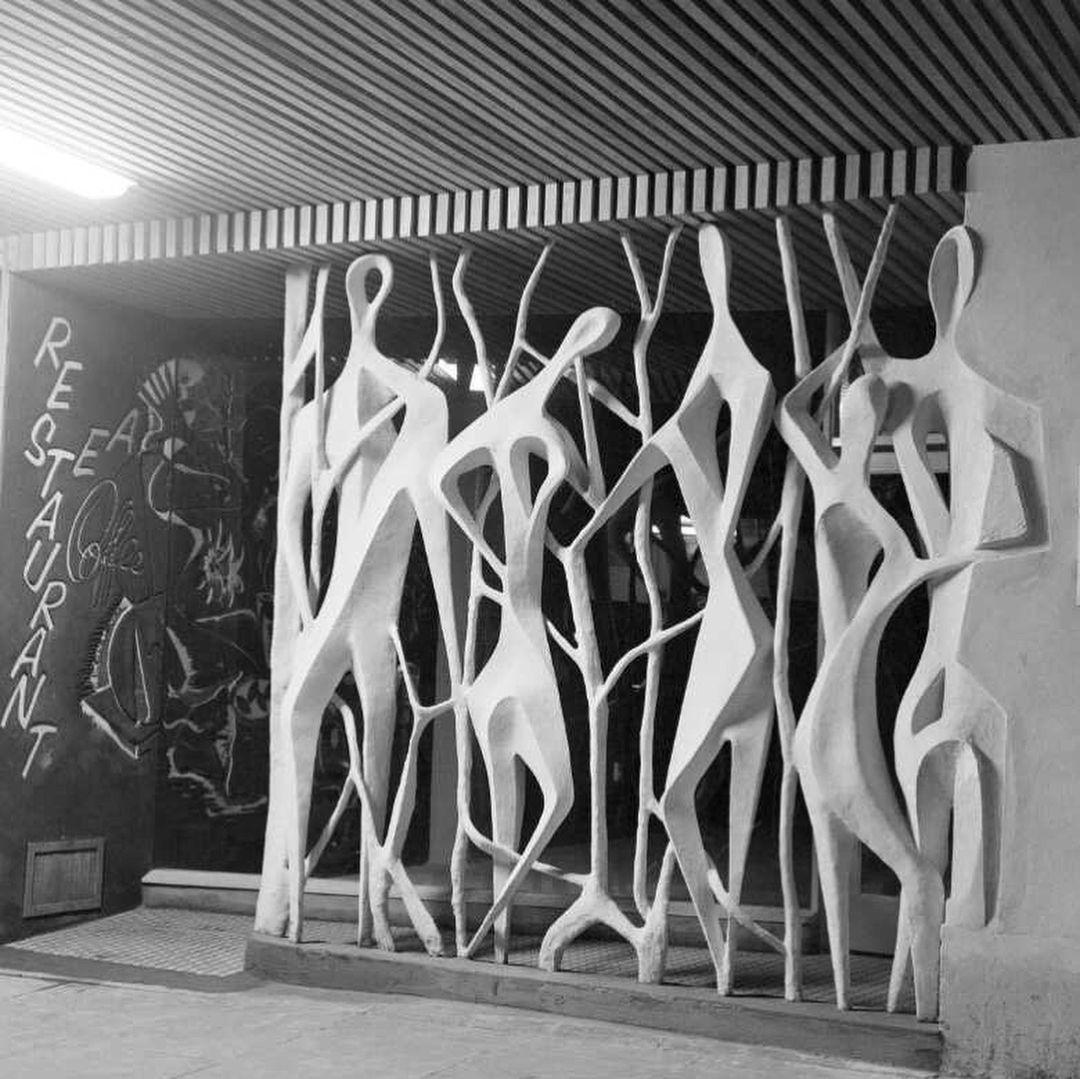Untitled (Chez Lilly Cafe)
Erwin Winkler
Friedrich Eisenhofer
Type
- Mural
Medium
- Concrete
- Paint
Dimensions
- H2560 x W2900 x D30mm (current visible portion of mural) Original work: H2560 x W3490mm

Fritz Eisenhofer & Erwin Winkler, Untitled (Chez Lilly cafe) (1959), 39 Dixon St, Te Whanganui-a-Tara Wellington. Images: Bronwyn Holloway-Smith, Public Art Heritage Aotearoa New Zealand, 2024




- DETAILS
- MAP
Description
This mural was an extant feature of Chez Lilly, one of many mid-century coffee houses that transformed the urban life of Wellington. Both the mural, and interior fit-out, were designed by Austrian architects Erwin Winkler and Fritz Eisenhofer (hence the mural is signed W & E).
Historic images show the mural painted black with a white relief, so the current monochromatic scheme is not original. The work also originally extended towards the street under a portico, however this portion has either been concealed or destroyed so that only the inside portion is now visible. The original design also shows a sculptural screen, however this has been removed (presumed destroyed).
Eisenhofer’s wife Helen recalls that Winkler and Eisenhofer “designed and did the art work for Kurt and Lilly Blum the owners of Chez Lilly. They designed and worked on a number of restaurants in the sixties. Chez Lilly was not one of the early licensed restaurants it was a meeting place for many Europeans who settled in Wellington” (Helen Eisenhofer, Facebook comment, 11 September 2020)
Live music was also a feature of the cafe, as Don Lindale recounts: “We had a small jazz group from the Victoria University Jazz Club that played here from time to time. Bruce Talbot (tenor), Barry Clothier (bass), Peter Webb (Guitar) and me on the drum kit. From memory we were paid in toasted sandwiches and coffee.” (Don Lindale, Facebook comment, 25 March 2015)
Bronwyn Labrum provides useful social context in her book Real Modern: Everyday New Zealand in the 1950s and 1960s:
“In the late 1950s and throughout the 1960s, coffee bars sprang up in the main centres, especially in Wellington. The Cafe du Boulevard was run by Bart Cox, one of several European immigrants who transformed Wellington’s urban night life in the 1950s. These new cafés remained open until the early hours of the morning, and patrons could talk or read the newspaper, watch and listen to others, or find kindred spirits and maybe even romance.
“The cafés were deliberately ‘foreign’ and sophisticated, as their names suggest: La Scala, the Picasso, Sans Souci Coffee Shoppe, Tete a Tete and the International Coffee Lounge, run by Wellington transgendered identity Carmen.
“They had innovative interiors using inexpensive but hard-wearing formica or, in the more upmarket premises, wooden veneer. Sparse decorations, low lights and a lot of cigarette smoke completed the atmosphere. They served Cona-type coffee or espresso on newly imported machines. Some added a dash of liquor.
“The cafes provided a home away from home for immigrants, as well as trend-setting locals. As former restaurateur Eric Kearney recalls:
“In 1963 the Swiss boys, together with spouse and maman (ensconced in the tobacco booth), were part of the ‘yeast’ which leavened Wellington’s night life. Chez Lilly with Kurt and Lilly, Monde Marie with Mary Seddon, Cafe du Boulevard with Bart Cox, Casa Fontana with Freddie Carr, Tete a tete with June Griffith, Left Bank with Peggy Tosswell, the Beasley/Kerr Montmartre, Man Friday, Picasso, Vienna, Capri, Kenya et al … there was more to life than work and home to the radio.”
“By the end of the 1960s, there were more than 60 coffee shops, bars or lounges in the central Wellington area, yet within a few years they began to disappear. The change in the liquor laws in 1967 that allowed hotels to remain open until 10pm, the growing importance of instant coffee and the rise of television all played a part."
See also:
- Bronwyn Labrum, ‘Real Modern, Everyday New Zealand in the 1950s and 1960s’, (Te Papa Press: 2015)
- Bronwyn Labrum, ‘Before we Drank Flat Whites’, excerpt from ’Real Modern’, published by NZ Herald, Tuesday Nov 24, 2015
